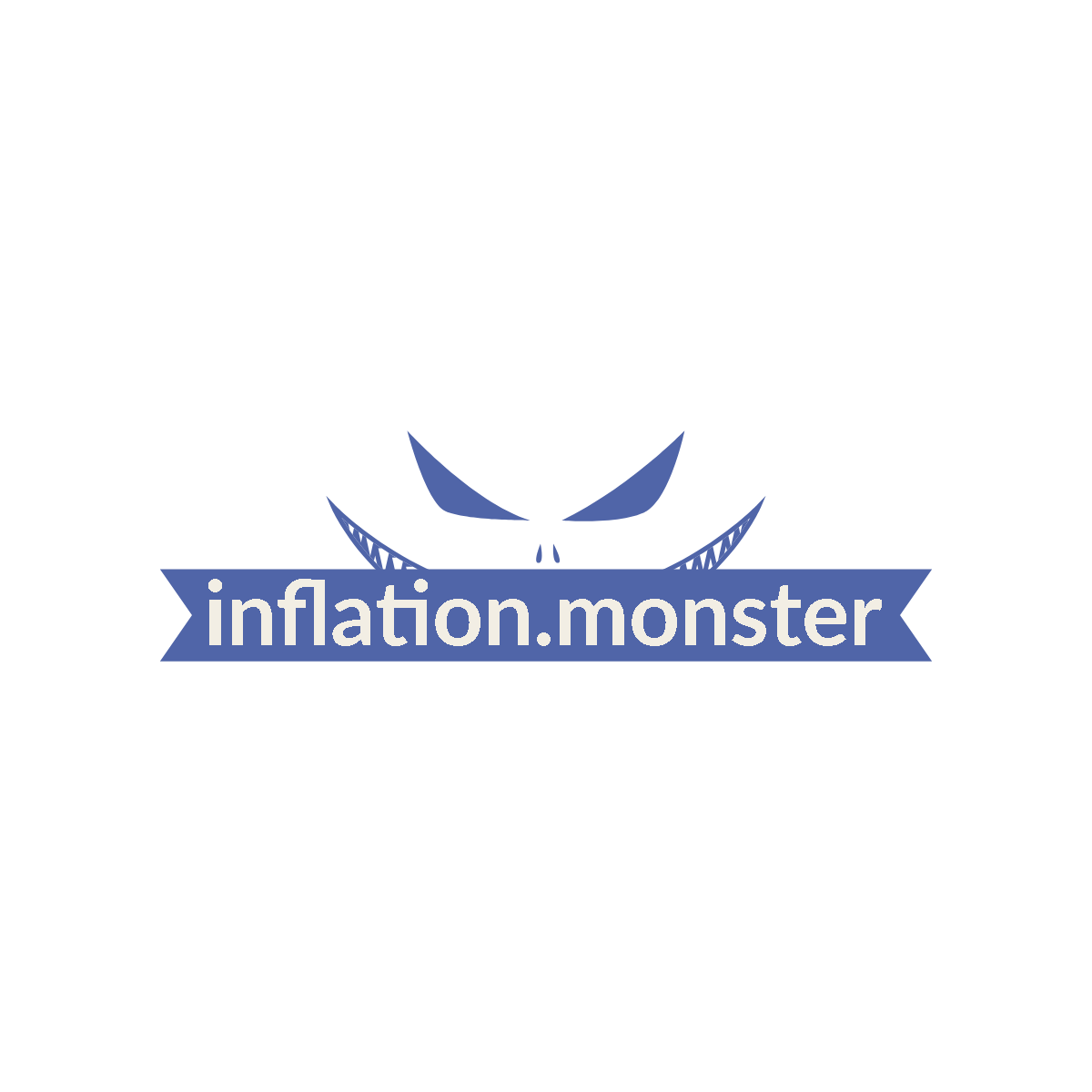Inflation’s Role in Monetary Policy is a fascinating exploration of how the phenomenon of inflation influences the decisions and actions taken by central banks around the world. At Inflation.Monster, we strive to provide you with a comprehensive understanding of this complex subject, shedding light on the intricate relationship between inflation, money, and economics. Join us on this journey as we dig deep into the world of hard money, unravel the mysteries behind the formidable inflation monster, and empower you with the knowledge required to navigate the ever-evolving financial landscape.

Introduction
Welcome to our comprehensive article on the relationship between inflation and monetary policy. Inflation is a key concept in economics, and understanding its causes, types, and effects is crucial for managing monetary policy effectively. In this article, we will delve into the definition and causes of inflation, explore the concept of monetary policy and its objectives and tools, and examine the impact of inflation on monetary policy. Furthermore, we will discuss how central banks play a role in controlling inflation and the relationship between inflation and interest rates. By the end of this article, you will have a clear understanding of the intricate dynamics between inflation and monetary policy.
Understanding Inflation
Definition of inflation
Inflation refers to the sustained increase in the average price level of goods and services in an economy over a period of time. It represents a decline in the purchasing power of money and can erode the value of savings and income. Inflation is measured using various consumer price indices, such as the Consumer Price Index (CPI) or the Producer Price Index (PPI).
Causes of inflation
Inflation can be caused by several factors, including demand-pull inflation and cost-push inflation. Demand-pull inflation occurs when demand for goods and services outpaces their supply, leading to upward pressure on prices. Cost-push inflation, on the other hand, is caused by an increase in production costs, such as wages or raw material prices, which leads to higher prices for the end consumer.
Types of inflation
There are different types of inflation based on the rate and nature of price increases. Some common types include creeping inflation (low and stable inflation rate), galloping inflation (rapidly accelerating inflation), and hyperinflation (extreme and uncontrollable price increases). Understanding these types of inflation is important for policymakers in formulating appropriate monetary policy responses.

Monetary Policy
Definition of monetary policy
Monetary policy refers to the actions taken by a central bank to manage the money supply and interest rates in an economy. The aim of monetary policy is to achieve price stability, promote economic growth, and maintain financial stability. Central banks use various tools to influence the money supply and interest rates in order to achieve their objectives.
Objectives of monetary policy
The primary objective of monetary policy is to achieve price stability. By ensuring low and stable inflation, monetary policy aims to preserve the purchasing power of money and create a conducive environment for sustainable economic growth. Other objectives may include promoting full employment, maintaining exchange rate stability, and supporting financial stability.
Tools of monetary policy
Central banks have several tools at their disposal to implement monetary policy. These tools include open market operations, where the central bank buys or sells government securities to control the money supply; reserve requirements, which determine the amount of reserves commercial banks must hold; and the use of interest rates, specifically the central bank’s policy rate, to influence borrowing costs and overall economic activity.
Inflation Targeting
Concept of inflation targeting
Inflation targeting is a monetary policy framework in which the central bank sets an explicit target for inflation and adjusts its policy instruments to achieve that target. The target is typically based on a specific inflation measure, such as the CPI. Inflation targeting provides transparency and accountability to the public and helps anchor inflation expectations, which in turn can influence actual inflation.
Benefits of inflation targeting
Inflation targeting has several potential benefits. By providing a clear objective for monetary policy, it helps to reduce uncertainty and guide economic agents’ behavior. It also allows for a more transparent and predictable policy-making process, which can enhance the credibility of the central bank. Inflation targeting can contribute to improved macroeconomic stability, lowered inflation volatility, and increased central bank independence.
Challenges of inflation targeting
While inflation targeting has proven to be an effective monetary policy framework, it is not without challenges. One challenge is accurately measuring inflation, as different inflation measures may have varying impacts on different segments of the population. Another challenge is the potential conflict between inflation targeting and other policy objectives, such as economic growth or employment. Additionally, external shocks and factors beyond the control of the central bank can pose challenges to achieving the inflation target.

The Relationship between Inflation and Monetary Policy
The relationship between inflation and monetary policy is one of interdependence. Inflation can be both a cause and a consequence of monetary policy actions. When inflation rises above the target range, central banks may implement tighter monetary policy measures to curb inflationary pressures. Conversely, in periods of low inflation or deflation, central banks may adopt an expansionary monetary policy to stimulate economic activity and increase inflation.
Effects of Inflation on Monetary Policy
Impact of high inflation
High inflation can have various negative effects on an economy. It erodes the purchasing power of money, leading to a decline in real incomes and wealth. High inflation can also increase production costs, lower investment, and reduce business and consumer confidence. In response, central banks may implement tighter monetary policy by raising interest rates to combat inflation and stabilize prices.
Impact of low inflation
Low inflation or deflation can also pose challenges for monetary policy. When inflation falls below the target range, central banks may face difficulties in stimulating economic growth and achieving their objectives. In such cases, central banks may employ expansionary monetary policy measures, such as lowering interest rates or implementing quantitative easing, to encourage borrowing, spending, and investment and prevent deflationary pressures.
Controlling Inflation through Monetary Policy
Tightening monetary policy
When faced with rising inflationary pressures, central banks may adopt a tightening monetary policy stance. This typically involves raising interest rates to reduce borrowing, spending, and investment, which can help curb inflation. Tightening monetary policy can also signal the central bank’s commitment to price stability and anchor inflation expectations.
Loosening monetary policy
In periods of low inflation or economic downturns, central banks may employ a loosening monetary policy approach. This can involve lowering interest rates to encourage borrowing and spending, as well as implementing unconventional monetary policy measures, such as quantitative easing, to boost liquidity in the financial system. Loosening monetary policy aims to stimulate economic activity, promote inflation, and support overall economic growth.
Central Banks and Inflation
Role of central banks in controlling inflation
Central banks play a crucial role in controlling inflation through their monetary policy decisions. As independent institutions, they are responsible for formulating and implementing monetary policy measures to achieve price stability. By adjusting interest rates, conducting open market operations, and managing the money supply, central banks aim to influence inflation rates and maintain macroeconomic stability.
Independence of central banks
The independence of central banks is essential for effectively controlling inflation. Political interference in monetary policy decisions can undermine the credibility and effectiveness of central banks. The independence of central banks allows them to make decisions based on economic fundamentals and long-term objectives, rather than short-term political considerations. Central bank independence contributes to maintaining the public’s confidence in monetary policy and helps anchor inflation expectations.
Inflation’s Impact on Interest Rates
Relationship between inflation and interest rates
There is a strong relationship between inflation and interest rates. Generally, when inflation rises, central banks may raise interest rates to counteract inflationary pressures and cool down the economy. Higher interest rates make borrowing more expensive and can reduce consumer spending and business investment. Conversely, when inflation is low or declining, central banks may lower interest rates to stimulate borrowing, spending, and investment and support economic growth.
Effect of inflation on borrowing costs
Inflation affects borrowing costs by influencing interest rates. When inflation rises, lenders may demand higher interest rates to compensate for the eroding value of money over time. Higher interest rates increase the cost of borrowing for individuals and businesses, which can impact their borrowing decisions. On the other hand, low inflation or deflation may lead to lower interest rates, making borrowing more affordable.
Effect of inflation on savings and investments
Inflation also affects savings and investments. When inflation is higher than the interest rate earned on savings, the real value of savings decreases over time. This can discourage saving and encourage spending, potentially fueling further inflation. Additionally, higher inflation can lead investors to seek out investments that offer higher returns to offset inflationary effects. Understanding the impact of inflation on savings and investments is crucial for individuals and policymakers in managing financial decisions and formulating effective monetary policy.
Conclusion
Inflation and monetary policy are intricately connected, with each influencing the other in various ways. By understanding the causes and types of inflation, the objectives and tools of monetary policy, and the impact of inflation on monetary policy decisions, we can better comprehend the complex relationship between inflation and the economy. Central banks play a pivotal role in controlling inflation and maintaining price stability, while also considering other economic objectives. Furthermore, the relationship between inflation and interest rates highlights the importance of managing inflation for savers, borrowers, and investors alike. As we navigate the financial landscape, understanding and monitoring inflation’s role in monetary policy is crucial in making informed financial decisions and ensuring the stability and growth of our economies.




